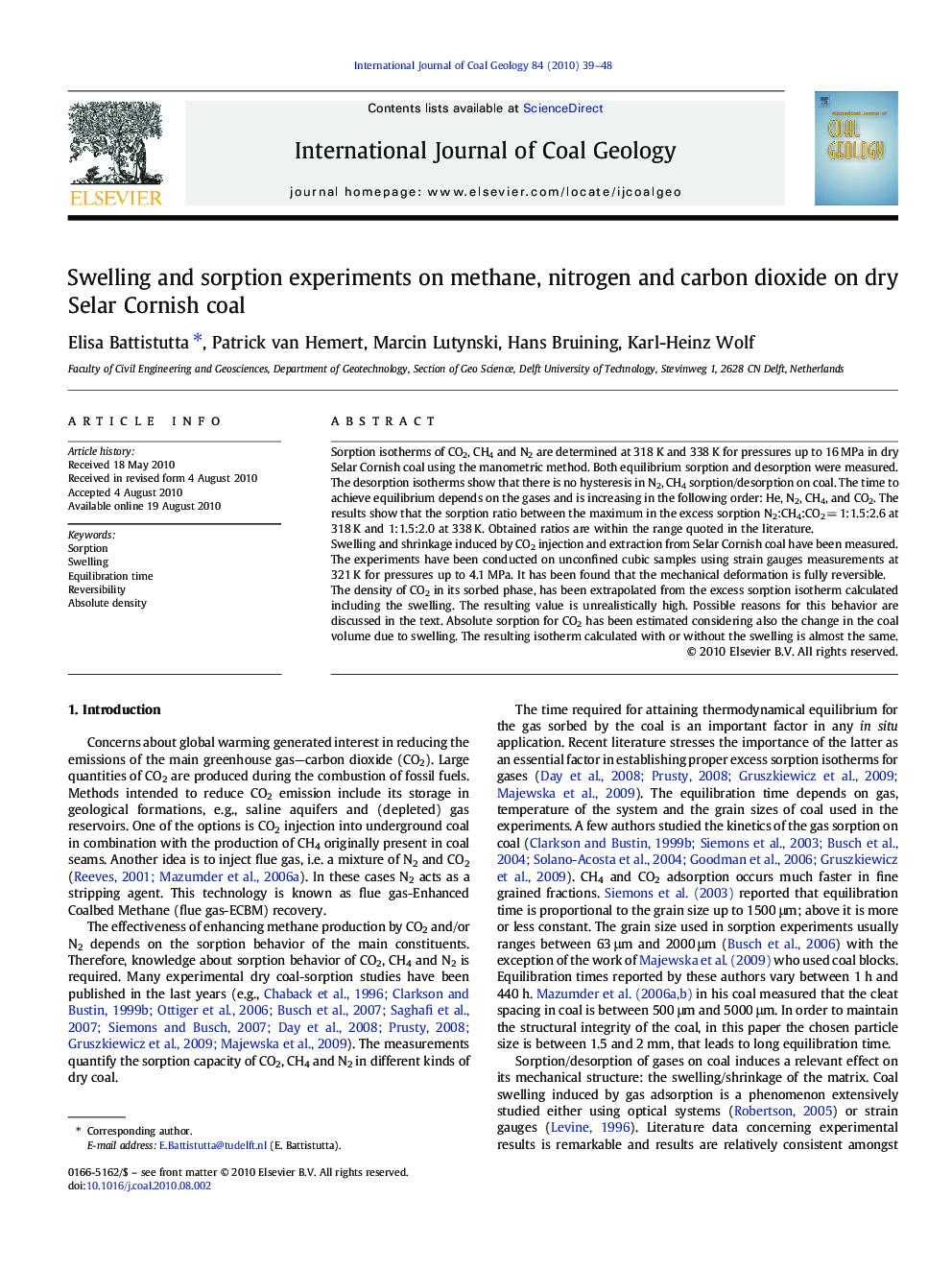| Article ID | Journal | Published Year | Pages | File Type |
|---|---|---|---|---|
| 1753758 | International Journal of Coal Geology | 2010 | 10 Pages |
Sorption isotherms of CO2, CH4 and N2 are determined at 318 K and 338 K for pressures up to 16 MPa in dry Selar Cornish coal using the manometric method. Both equilibrium sorption and desorption were measured. The desorption isotherms show that there is no hysteresis in N2, CH4 sorption/desorption on coal. The time to achieve equilibrium depends on the gases and is increasing in the following order: He, N2, CH4, and CO2. The results show that the sorption ratio between the maximum in the excess sorption N2:CH4:CO2 = 1:1.5:2.6 at 318 K and 1:1.5:2.0 at 338 K. Obtained ratios are within the range quoted in the literature.Swelling and shrinkage induced by CO2 injection and extraction from Selar Cornish coal have been measured. The experiments have been conducted on unconfined cubic samples using strain gauges measurements at 321 K for pressures up to 4.1 MPa. It has been found that the mechanical deformation is fully reversible.The density of CO2 in its sorbed phase, has been extrapolated from the excess sorption isotherm calculated including the swelling. The resulting value is unrealistically high. Possible reasons for this behavior are discussed in the text. Absolute sorption for CO2 has been estimated considering also the change in the coal volume due to swelling. The resulting isotherm calculated with or without the swelling is almost the same.
Research Highlights►Equilibrium in a pressure step can be established if there is no change in pressure. ►For N2− and CH4 the excess sorption isotherm does not show any hysteresis. ►CO2 excess sorption isotherm does show hysteresis. ►The physical meaning of the extrapolated absolute density of CO2 obtained from the excess sorption isotherm is not clear. ► Excess sorption data may not provide enough information to accurately determine all unknowns and explain molecular-scale phenomena. ►The free swelling accounts for most of the decline in the CO2 excess sorption at high pressures.
